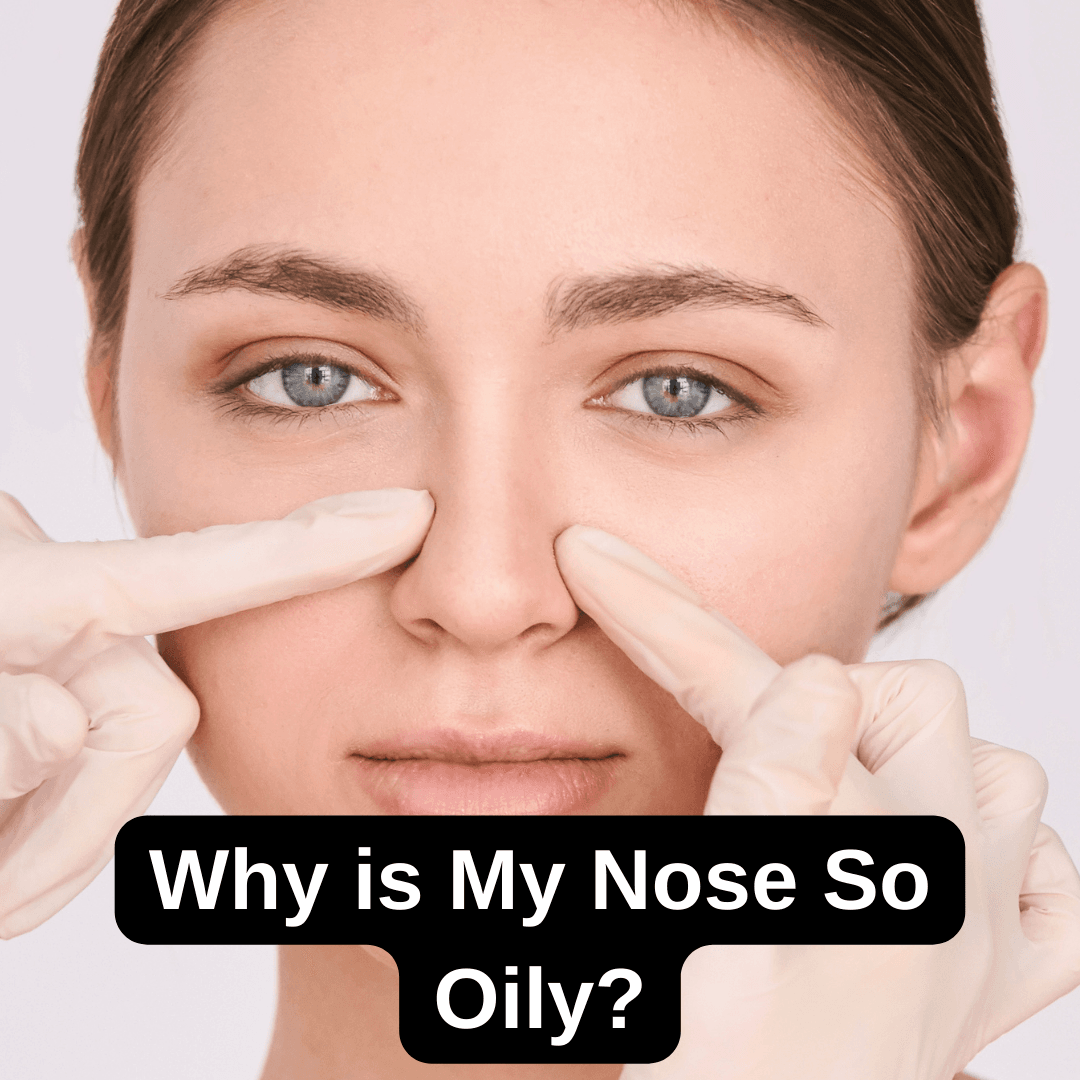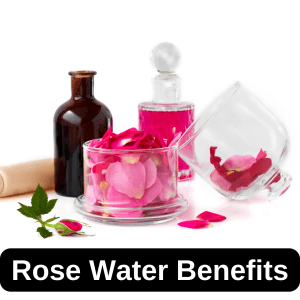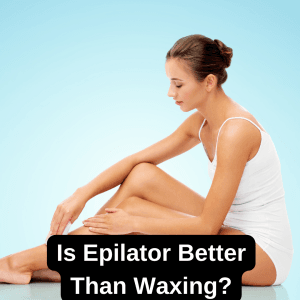If you’ve ever looked in the mirror and wondered, “Why is my nose so oily?”—you’re not alone. Many people struggle with an excessively greasy nose, which can make the skin appear shiny, clog pores, and contribute to breakouts. This issue is primarily caused by overactive sebaceous glands that produce too much sebum. While some oil is essential for skin health, an imbalance can lead to persistent oiliness, especially in the T-zone. In this guide, we’ll explore the causes of an oily nose, the best skincare solutions, and effective ways to keep your skin balanced.
This article breaks down the causes of an oily and greasy nose and provides effective solutions to control excess oil and keep your skin looking balanced.
What Causes an Oily Nose? Understanding Sebum Production
Your skin naturally produces oil (sebum) to protect and hydrate itself. However, too much sebum production can result in excessive shine, clogged pores, and breakouts.
Key Reasons for an Oily Nose:
| Cause | Why It Happens |
|---|---|
| Overactive Sebaceous Glands | Your nose has more oil glands than other areas, leading to excess oil production. |
| Genetics | If your family members have oily skin, you’re more likely to experience the same issue. |
| Hormonal Changes | Fluctuations in hormones (puberty, pregnancy, menstruation) can increase oil production. |
| Large Pores | Larger pores trap more oil, making the nose appear shinier. |
| Diet & Lifestyle | Spicy foods, processed sugars, and dairy can trigger excessive oiliness. |
| Using the Wrong Skincare Products | Harsh cleansers strip the skin, causing it to overcompensate with more oil. |
| Weather & Humidity | Hot and humid environments can cause the skin to produce extra sebum. |
How to Get Rid of an Greasy Nose: Best Treatments & Home Remedies

If you’re wondering how to reduce oil on your nose, here are dermatologist-approved solutions:
1. Use a Gentle, Oil-Free Cleanser
Using the right cleanser is essential for controlling excess oil without disrupting your skin’s natural balance. Many people make the mistake of choosing harsh, alcohol-based face washes that strip away too much oil, causing the skin to overcompensate by producing even more sebum. Instead, opt for a gentle, oil-free cleanser designed specifically for oily or combination skin.
What to Look for in a Cleanser for Oily Skin:
- Oil-Free & Non-Comedogenic: Prevents clogged pores and excess sebum buildup.
- Salicylic Acid or Glycolic Acid: Helps exfoliate and remove impurities that contribute to oiliness.
- pH-Balanced Formula: Protects the skin barrier and prevents excessive dryness.
- Fragrance-Free & Alcohol-Free: Reduces irritation, especially for sensitive skin.
How to Properly Cleanse Your Face:
- Wash twice daily – once in the morning and once before bed. Over-washing can trigger increased oil production.
- Use lukewarm water – hot water can strip essential moisture, while cold water may not cleanse thoroughly.
- Massage gently for 30-60 seconds – focus on the T-zone (forehead, nose, and chin) where oil buildup is common.
- Rinse thoroughly and pat dry – do not rub the skin with a towel, as this can lead to irritation.
For those seeking gentle, natural toners after cleansing, rose water is a popular option known for its soothing and balancing properties. Learn more about its skincare benefits here: https://www.epilationworld.com/rose-water-benefits/
Common Mistakes to Avoid:
- Skipping Cleansing at Night: Dirt, makeup, and sweat accumulate throughout the day and can clog pores.
- Using Harsh Scrubs Daily: Over-exfoliation can lead to irritation and more oil production.
- Not Moisturizing After Cleansing: Even oily skin needs hydration to prevent excessive sebum production.
Recommended Oil-Free Cleansers for Oily Skin
If you’re looking for effective cleansers that won’t leave your skin dry or irritated, here are some dermatologist-recommended options:
- Gel-Based or Foam Cleansers – These remove excess oil without leaving a greasy residue.
- Micellar Water for Oily Skin – Great for a quick cleanse without over-drying.
2. Apply a Lightweight, Mattifying Moisturizer
One of the biggest misconceptions about oily skin is that it does not need moisturizer. In reality, skipping moisturizer can make your skin even oilier. When the skin lacks hydration, it compensates by producing more sebum, leading to an even shinier nose and forehead. To keep oiliness under control while maintaining a balanced skin barrier, opt for a lightweight, mattifying moisturizer designed for oily or combination skin.
What to Look for in a Moisturizer for Oily Skin:
- Oil-Free & Non-Comedogenic: Prevents clogged pores and excess shine.
- Water-Based Formula: Hydrates without adding extra oil to the skin.
- Mattifying Ingredients (Silica, Clay, or Niacinamide): Absorbs excess sebum and reduces shine.
- Hyaluronic Acid or Glycerin: Provides lightweight hydration without a greasy feel.
- SPF Protection (for Daytime Use): Shields skin from UV rays, which can trigger increased oil production.
How to Apply Moisturizer for Best Results:
- Use a pea-sized amount – Too much product can lead to buildup and clogged pores.
- Apply on damp skin – After cleansing, lightly pat your face dry and apply moisturizer while the skin is still slightly damp. This helps lock in hydration.
- Focus on the T-Zone – Apply gently on the nose, forehead, and chin, where oil production is highest.
- Wait a few minutes before applying makeup – This allows the moisturizer to fully absorb into the skin, preventing excessive shine.
Best Types of Mattifying Moisturizers for Oily Skin:
- Gel-Based Moisturizers – Lightweight, fast-absorbing, and won’t clog pores.
- Mattifying Lotions – Contain oil-absorbing particles to reduce shine throughout the day.
- SPF Moisturizers for Oily Skin – Provides sun protection without making the skin greasy.
Common Mistakes to Avoid:
Skipping Moisturizer Completely – Leads to increased oil production and dehydration.
Using Heavy Creams – Can clog pores and make the nose appear shinier.
Applying Too Much Product – A thin layer is enough to hydrate without overwhelming the skin.
3. Use Oil-Blotting Sheets Throughout the Day
Even with the best skincare routine, oil buildup on the nose and T-zone can still occur, especially in hot weather or humid conditions. Instead of using harsh powders or constantly washing your face—which can strip the skin and cause more oil production—oil-blotting sheets offer a quick and effective solution to absorb excess sebum without disrupting your makeup or drying out your skin.
Why Oil-Blotting Sheets Work for Oily Skin
- Instantly Absorbs Oil – Removes shine from the nose and forehead within seconds.
- Non-Irritating & Gentle – Does not disturb the skin barrier or cause over-drying.
- Convenient & Portable – Perfect for use throughout the day, whether at work, school, or events.
- No Clogged Pores – Unlike some powders, blotting sheets do not add extra product to the skin.
How to Use Oil-Blotting Sheets Correctly
- Gently press (do not rub) the sheet onto your nose, forehead, or any oily areas.
- Hold for a few seconds to let it absorb excess sebum.
- Dispose of the used sheet and avoid reusing it to prevent bacteria buildup.
- Repeat as needed throughout the day, especially in humid conditions.
Best Types of Oil-Blotting Sheets
- Charcoal-Infused Sheets – Help remove excess oil and impurities.
- Rice Paper Blotting Sheets – Provide a natural, powder-free solution.
- Mattifying Sheets with Powder Finish – Reduce shine while keeping skin fresh.
Common Mistakes to Avoid
Rubbing the Sheet on Your Face – This can spread oil and bacteria.
Overusing Blotting Sheets – Using too many in a short period can remove too much oil, causing the skin to compensate by producing more.
Skipping Hydration – Blotting removes oil but does not hydrate. Always follow up with a light moisturizer if needed.
4. Exfoliate 2–3 Times a Week to Unclog Pores
Regular exfoliation is essential for managing an oily nose, as it helps remove dead skin cells, unclog pores, and reduce excess sebum buildup. When your pores are clogged, oil can become trapped, leading to an even shinier appearance and an increased risk of blackheads and breakouts. However, over-exfoliating can irritate the skin and trigger even more oil production, so finding the right balance is key.
Why Exfoliation Helps Control an Oily Nose
- Removes Dead Skin Cells – Prevents the buildup that leads to clogged pores.
- Minimizes Pore Size Appearance – Reduces excess oil accumulation in enlarged pores.
- Controls Sebum Production – Encourages a balanced skin environment.
- Prepares Skin for Other Products – Helps treatments like serums and moisturizers absorb better.
Best Exfoliating Ingredients for Oily Skin
When choosing an exfoliant, opt for chemical exfoliants instead of harsh physical scrubs, which can damage the skin barrier.
- Salicylic Acid (BHA) – Penetrates deep into pores, breaking down oil and reducing acne risk.
- Glycolic Acid (AHA) – Gently removes surface dead skin cells and improves skin texture.
- Lactic Acid (AHA) – Exfoliates while providing hydration to prevent over-drying.
- Activated Charcoal or Clay Masks – Absorbs excess oil and detoxifies the skin.
How to Exfoliate Properly for an Oily Nose
- Choose a gentle exfoliant (avoid harsh scrubs that can irritate oily skin).
- Use 2–3 times a week, depending on your skin’s tolerance.
- Apply the exfoliant to clean, dry skin, focusing on the nose and T-zone.
- Follow with a lightweight, oil-free moisturizer to maintain hydration.
- Always wear sunscreen, as exfoliation increases sensitivity to UV rays.
What to Avoid When Exfoliating Oily Skin
Exfoliating too often – More than three times a week can strip essential oils and cause irritation.
Using harsh scrubs – Physical exfoliants with large, rough particles can damage the skin and lead to inflammation.
Skipping moisturizer – Even oily skin needs hydration to prevent overproduction of oil.
5. Apply a Clay Mask to Absorb Excess Oil
Using a clay mask is one of the most effective ways to control excess oil on your nose and prevent clogged pores. Clay masks work by drawing out impurities, absorbing sebum, and tightening pores, which helps reduce the appearance of shine and breakouts. When used consistently, clay masks can help balance oily skin without over-drying it.
How Do Clay Masks Help an Oily Nose?
- Absorbs Excess Sebum – Clay naturally soaks up oil, leaving the skin matte.
- Deep Cleans Pores – Pulls out dirt, bacteria, and other impurities trapped in pores.
- Prevents Blackheads & Acne – Helps reduce clogged pores that lead to breakouts.
- Provides a Mattifying Effect – Controls shine throughout the day.
Best Types of Clay for Oily Skin
Not all clays work the same way, so choosing the right one can enhance results:
- Kaolin Clay – A mild clay that absorbs oil without stripping moisture, great for sensitive skin.
- Bentonite Clay – A highly absorbent clay that deeply cleanses and detoxifies, ideal for very oily skin.
- French Green Clay – Rich in minerals and has antibacterial properties, making it great for acne-prone skin.
How to Use a Clay Mask for an Oily Nose
- Start with clean skin – Wash your face with a gentle, oil-free cleanser.
- Apply an even layer of the clay mask, focusing on the T-zone and oily areas.
- Let the mask sit for 10–15 minutes until it starts to dry but doesn’t fully crack.
- Rinse off with lukewarm water and pat dry with a soft towel.
- Follow up with a lightweight moisturizer to prevent excessive drying.
- Use 1–2 times per week to maintain balanced oil production.
What to Avoid When Using Clay Masks
Overusing – Applying more than twice a week can strip skin and cause irritation.
Leaving it on for too long – Once the mask dries completely, it can start absorbing moisture from your skin.
Skipping moisturizer – Even oily skin needs hydration to maintain balance.
If your skin is very oily, you can apply a thin layer of clay mask only to your nose or T-zone instead of your entire face.
6. Choose Makeup Products Wisely
The type of makeup you use can significantly impact how oily your nose appears throughout the day. Heavy, oil-based cosmetics can clog pores, increase shine, and make your skin look greasy faster. Choosing the right products can help control excess sebum, maintain a matte finish, and prevent makeup from breaking down due to oil production.
Best Makeup Choices for an Oily Nose
- Oil-Free, Matte Foundation – Look for labels like “oil-free,” “matte,” or “long-wearing” to prevent excessive shine. Powder-based or oil-free liquid foundations help absorb oil instead of adding more.
- Non-Comedogenic Products – These are specifically formulated not to clog pores, reducing the risk of breakouts caused by excess oil.
- Mattifying Primer – A lightweight, oil-control primer creates a smooth base for makeup while absorbing excess sebum, helping your foundation stay in place longer.
- Oil-Free Concealer – Opt for a light, breathable concealer to cover redness or blemishes without clogging pores.
- Translucent Setting Powder – A finely milled, oil-absorbing setting powder can help mattify your T-zone and prevent shine from developing throughout the day.
- Blotting Papers – Carry blotting sheets to quickly remove oil throughout the day without disturbing your makeup.
What to Avoid in Makeup for Oily Skin
- Cream-Based Foundations & Concealers – These contain more oils and can contribute to clogged pores and excess shine.
- Heavy, Thick Formulas – Using too much makeup or thick layers can make your skin look cakey and trigger even more oil production.
- Shimmery or Luminous Finishes – Highlighters, dewy foundations, or illuminating powders can emphasize shine on an already oily nose.
When using eye makeup on oily skin, especially around the T-zone, smudging or breakdown can occur—similar to what happens when a lash lift doesn’t turn out as expected. If you’ve faced lash-related challenges, this guide may help: https://www.epilationworld.com/lash-lift-gone-wrong-fix/
Pro Tips to Keep Makeup Shine-Free
- Use a Setting Spray with Oil Control – Look for a setting spray with a matte finish to lock in your makeup without making your skin feel heavy.
- Apply Foundation in Thin Layers – Instead of thick layers, apply thin, buildable layers to prevent cakiness and excessive oil buildup.
- Set Makeup with Powder Throughout the Day – Use a light dusting of translucent powder on your nose as needed.
Just like layering nail polish correctly affects its finish and longevity, the way you layer and set your makeup matters for oily skin. See how proper application can make all the difference: https://www.epilationworld.com/how-many-coats-of-nail-polish-should-you-apply/
How to Prevent an Oily Nose: Expert Tips
✔ Watch Your Diet & Hydration
- Avoid processed foods, sugar, and dairy, which can trigger oil production.
- Drink plenty of water to keep the skin hydrated and prevent compensatory sebum production.
✔ Don’t Over-Wash Your Face
- Washing too often can strip the skin and cause it to produce even more oil to compensate.
- Stick to twice daily cleansing and use lukewarm water instead of hot water.
✔ Use Sunscreen Daily
- Sun exposure can stimulate more sebum production as the skin tries to protect itself.
- Use a lightweight, oil-free sunscreen to prevent greasy buildup.
Is Oily Skin Bad? The Truth About Sebum Production
While an oily nose can be frustrating, sebum has important benefits for the skin:
✔ Prevents dryness by keeping the skin naturally hydrated.
✔ Protects against environmental damage by forming a barrier.
✔ Slows down signs of aging, reducing fine lines and wrinkles.
Instead of trying to eliminate all oil, focus on balancing sebum production for healthy skin.
Common Myths About Oily Skin & Skincare Mistakes
Myth 1: Oily Skin Doesn’t Need Moisturizer
Reality: Skipping moisturizer can make your skin even oilier, as it tries to compensate for the lack of hydration.
Myth 2: Washing Your Face Frequently Reduces Oiliness
Reality: Over-cleansing strips the skin, triggering more oil production in response.
Myth 3: You Shouldn’t Use Oils on Oily Skin
Reality: Lightweight oils like squalane or rosehip oil can actually balance oil production and reduce excess shine.
How to Keep Your Nose Oil-Free
If you’re struggling with an oily nose, remember:
✔ The main cause is overactive sebaceous glands, often influenced by genetics, hormones, and lifestyle.
✔ The best way to reduce oil is a consistent skincare routine with gentle cleansers, oil-free moisturizers, and exfoliation.
✔ Diet, hydration, and sun protection also play a key role in maintaining healthy skin balance.
Want more expert skincare tips?
Check out our guide on when to exfoliate after laser hair removal
Frequently Asked Questions
1. Why is my nose oily even after washing it?
Even after cleansing, your skin continues to produce natural sebum. If your cleanser is too harsh, your skin may overcompensate by producing more oil.
2. What foods cause an oily nose?
Dairy, processed foods, and spicy dishes can trigger hormonal changes that increase oil production.
3. Can stress make my nose oilier?
Yes! High cortisol levels (stress hormone) can increase sebum production, making your nose shinier than usual.
4. What products should I avoid for an oily nose?
- Heavy, oil-based moisturizers
- Silicone-heavy primers
- Alcohol-based toners (they dry out the skin, leading to rebound oil production)
For more skincare guides, visit our homepage:
Epilation World
This article is for informational purposes only and is not a substitute for professional medical advice, diagnosis, or treatment. If you are experiencing persistent oily skin, severe acne, irritation, or other skin conditions, consult a board-certified dermatologist for expert guidance.

Board-Certified Aesthetic Specialist & Certified Laser Technician
She is a board-certified aesthetic specialist with 14+ years of experience in laser hair removal, skincare, and full-spectrum beauty services. Holding academic training in beauty sciences and advanced certifications, she blends medical-grade knowledge with personalized care. At Epilation World, her mission is to empower readers with clear, ethical, and research-backed insights that support confident personal care decisions.





